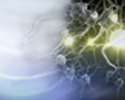Bilateral tonic-clonic seizure
Seizure - tonic-clonic; Seizure - grand mal; Grand mal seizure; Seizure - generalized; Epilepsy - generalized seizureBilateral tonic-clonic seizure is a type of seizure that involves the entire body. It is also called grand mal seizure. The terms generalized seizure, convulsion, or epilepsy are most often associated with bilateral tonic-clonic seizures.
-
Causes
Seizures result from electrical overactivity in the brain. Bilateral tonic-clonic seizures may occur in people of any age. They can occur once (single episode). Or, they can occur as part of a repeated, chronic illness (epilepsy). Some seizures are due to psychological problems (psychogenic or non-epileptic).
-
Symptoms
Many people with generalized bilateral tonic-clonic seizures have an aura with one or more symptoms before the seizure such as:
- Vision, taste, smell, or sensory changes.
- Seeing, smelling, or sometimes hearing things that are not there (hallucinations).
- Dizziness or other symptoms.
Some people have a focal onset seizure (only affecting one part of the body) that becomes a bilateral tonic-clonic seizure.
The seizures often result in rigid muscles (tonic phase). This is followed by violent muscle contractions (clonic phase). Other symptoms that occur during the seizure may include:
- Biting the cheek or tongue
- Clenched teeth or jaw
- Loss of urine or stool control (incontinence)
- Stopped breathing or difficulty breathing
- Blue skin color (cyanosis)
After the seizure, the person may have:
-
Exams and Tests
Your health care provider will perform a physical exam. This will include a detailed check of the brain and nervous system.
An electroencephalogram (EEG) will be done to check the electrical activity in the brain. People with seizures often have abnormal electrical activity seen on this test. In some cases, the test shows the area in the brain where the seizures start. The brain may appear normal after a seizure or between seizures.
Blood and urine tests may also be ordered to check for other health problems that may be causing the seizures.
Head CT or MRI scan may be done to find the cause and location of the problem in the brain.
References
Abou-Khalil BW, Gallagher MJ, Macdonald RL. Epilepsies. In: Jankovic J, Mazziotta JC, Pomeroy SL, Newman NJ, eds. Bradley and Daroff's Neurology in Clinical Practice. 8th ed. Philadelphia, PA: Elsevier; 2022:chap 100.
Kanner AM, Ashman E, Gloss D, et al. Practice guideline update summary: Efficacy and tolerability of the new antiepileptic drugs I: Treatment of new-onset epilepsy: Report of the Guideline Development, Dissemination, and Implementation Subcommittee of the American Academy of Neurology and the American Epilepsy Society. Neurology. 2018;91(2):74-81. PMID: 29898971 pubmed.ncbi.nlm.nih.gov/29898971/.
Mikati MA, Tchapyjnikov D, Rathke KM. Seizures in childhood. In: Kliegman RM, St. Geme JW, Blum NJ, et al, eds. Nelson Textbook of Pediatrics. 22nd ed. Philadelphia, PA: Elsevier; 2025:chap 633.
Wiebe S. The epilepsies. In: Goldman L, Cooney KA, eds. Goldman-Cecil Medicine. 27th ed. Philadelphia, PA: Elsevier; 2024:chap 372.











